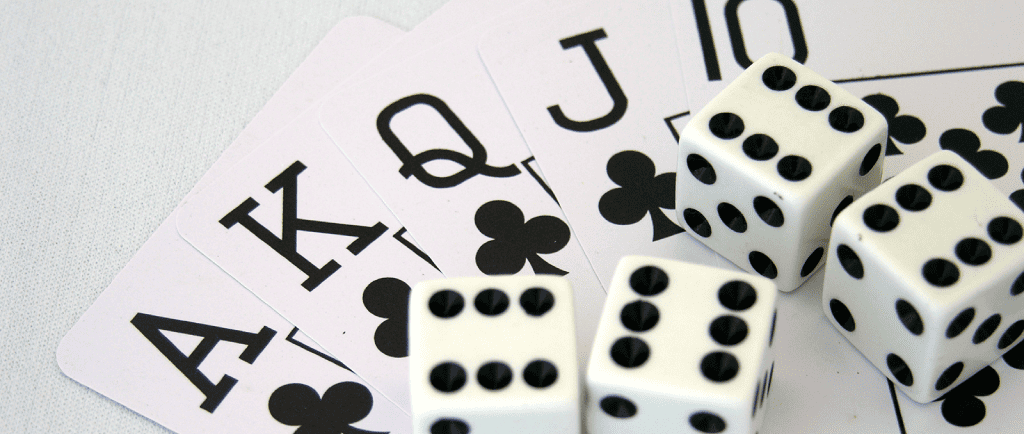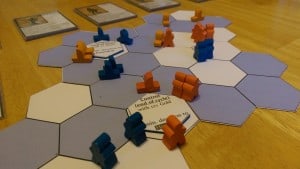
Actually, the term “parallel design” usually refers to independent creators coming up with similar works, or works about the same subject, at the same time. Like that summer when two blockbusters came out about saving the earth from an asteroid (Armageddon and Deep Impact), or that year we got several different games about wine making (Grand Cru, Vinhos, King’s Vineyard, and others in 2010).
However, today I’m considering a different meaning of that phrase. Today I’m talking about the necessity to design the main driving mechanism of a game in parallel with the rest of the game.
The game I was thinking about when this came to mind was my latest project Deities & Demigods. It occurred to me that these two aspects – the driving mechanism and the board play – are somewhat related, but in many ways separate. Separate, but interconnected… maybe that’s just the way games of this type are, games which have a specific driving mechanism, like Trajan’s Mancala-Rondel, 7 Wonders’ drafting, or Puerto Rico’s role selection. In all of these games there are many design decisions to be made regarding the driving mechanism, and it’s easy to ignore or forget the rest of the game while thinking about that.
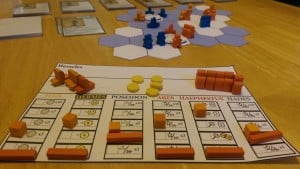
In Deities & Demigods, the driving mechanism is a deck of “role” cards. Like a role selection game, each turn a role is chosen and each player has a chance to participate. Unlike role selection games, the players don’t choose the roles – the game does. A shuffled deck of Deity cards will produce a card each round, and then each player in turn order will either increase devotion to that deity, or else cash in their devotion to take the action associated with that deity.
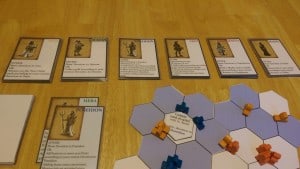
The different deities will affect the game in different ways: Zeus will improve your standing on the turn order track, Hermes will deliver gold (which you’ll spend to increase devotion), Ares and Poseidon will bring troops and ships into play and move them around the board, Hades will return fallen units to play from the underworld, and Hephaestus will allow you to build artifacts and buildings for special benefits. Players will be able to add cards to the deck for deities they want to come up more often, and later in the game players will be able to remove cards from the deck, placing them in a scoring pile to collect rewards for doing various things in the game.
Concentrating on the intricacies of this mechanism brings with it a lot of questions: When and how often will players be able to add cards to the deck (and remove them)? How much benefit should each step of devotion yield? What should it cost to increase devotion? How important is turn order (and how do we make it important enough to matter)? … Notice that none of these questions really have much to do with the rest of the game… Indeed, I haven’t even mentioned the rest of the game yet!
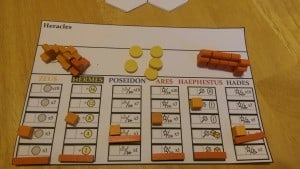
It’s easy to get wrapped up in this mechanism, but it’s difficult to come to any conclusions without considering what effects these deities will have. To an extent those effects will be governed by the deities, but to another extent the deity effects are dictated by the game action as well. For example, Ares and Poseidon don’t make sense unless there’s a board on which to move, with both land spaces (for troops) and sea spaces (for boats). Hades doesn’t make sense unless there’s some semblance of combat in which units die. On that note, it’s important to develop the rest of the game in tandem with the driving mechanism – you can’t really create one without an idea of how the other will look.
As it happens, in Deities & Demigods the rest of the game looks like this: You’ll move troops and boats around a hex-based board to complete quests and control cities. Your units will sit on the corners of hexes, or nodes, and when you move a group of units into a node that’s occupied by an opponent’s pieces, there’s a simple combat (you remove pieces 1-for-1 until one side is gone). At the end of the game, each city on the board confers some points to the player who has units on the most nodes adjacent to that city, so having lots of units in 1 space is more defensible, but spreading them out helps you actually control cities. There will also be Quest tiles on the board, with certain conditions listed on them. Fulfill the conditions to complete the quest for bonus scoring as well as an in-game bonus – each quest is associated with one of the deities, and completing it will put you in that deity’s good graces. Building artifacts and buildings will give you various advantages in the game, helping you support your chosen strategy.

When you’re designing the mechanisms for your games, do you consider the rest of the game? Or do you focus just on the driving mechanics, and let that dictate or inform the rest of the game later? Let me know your process in the comments below.

